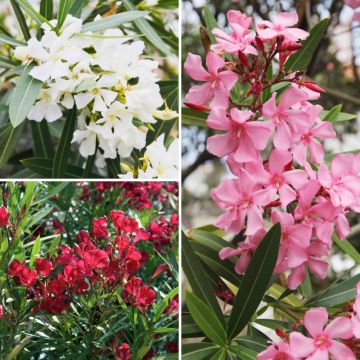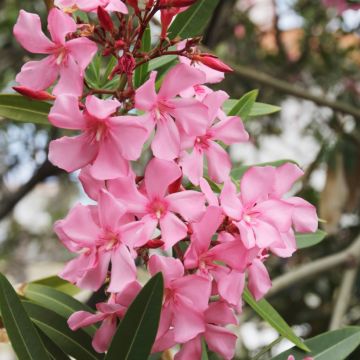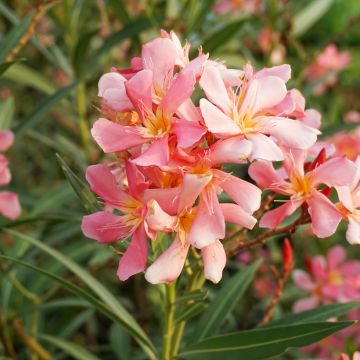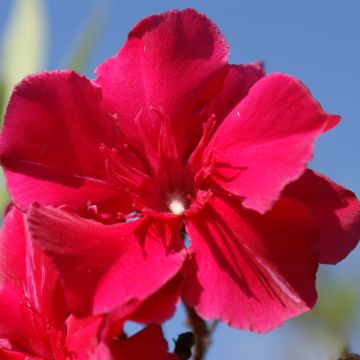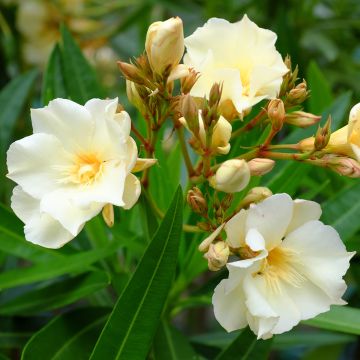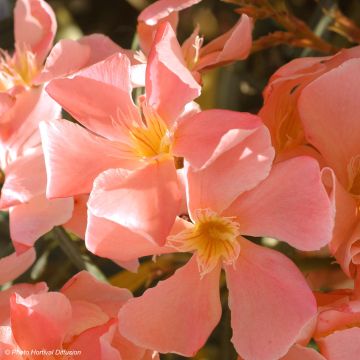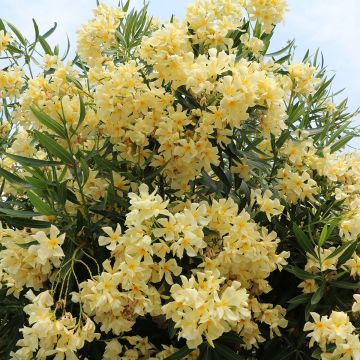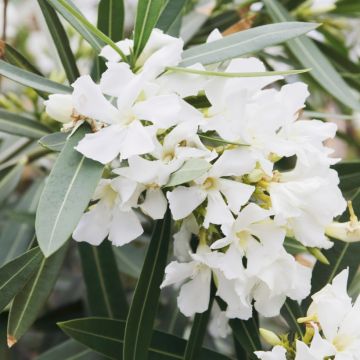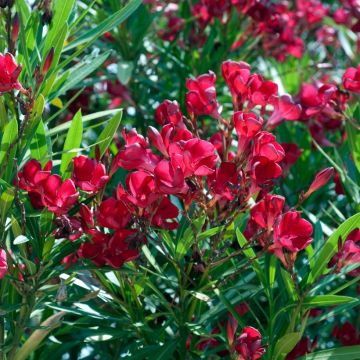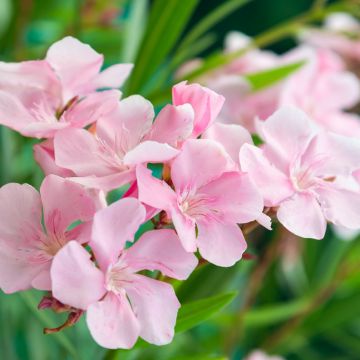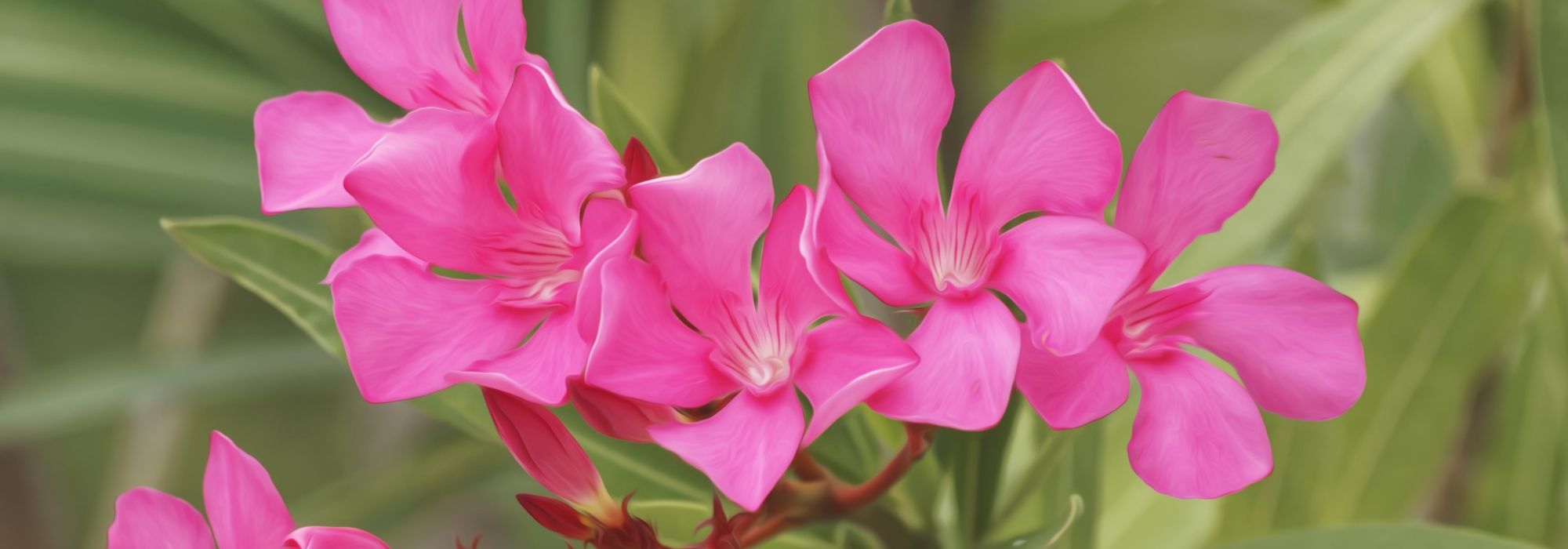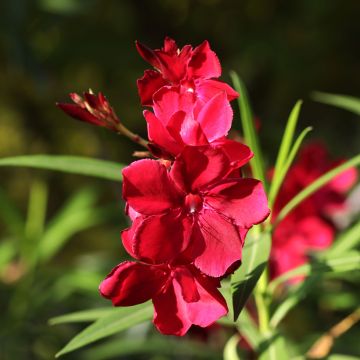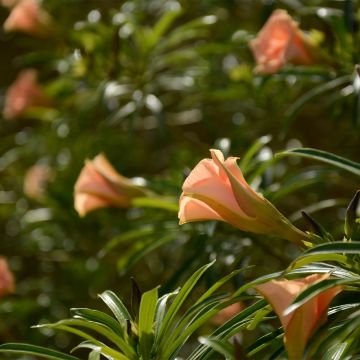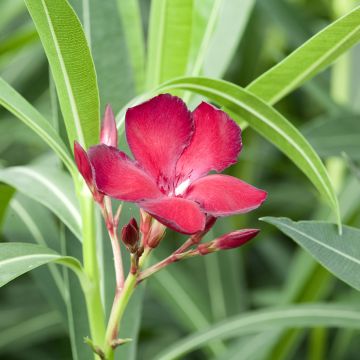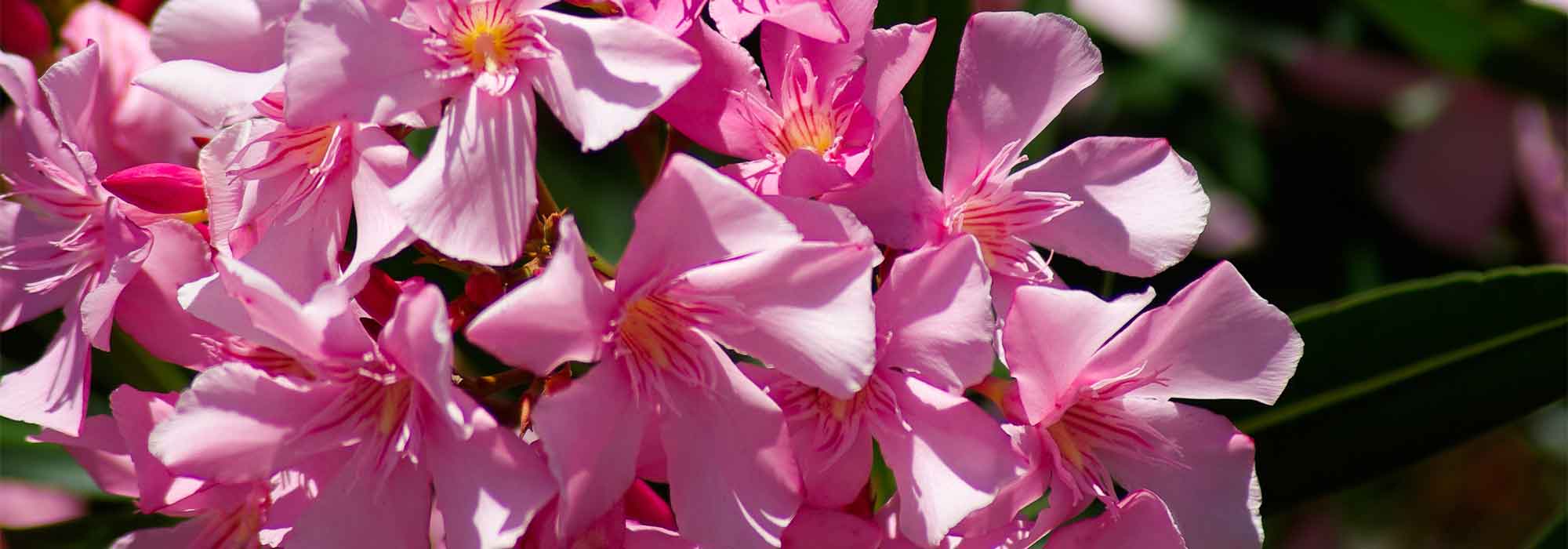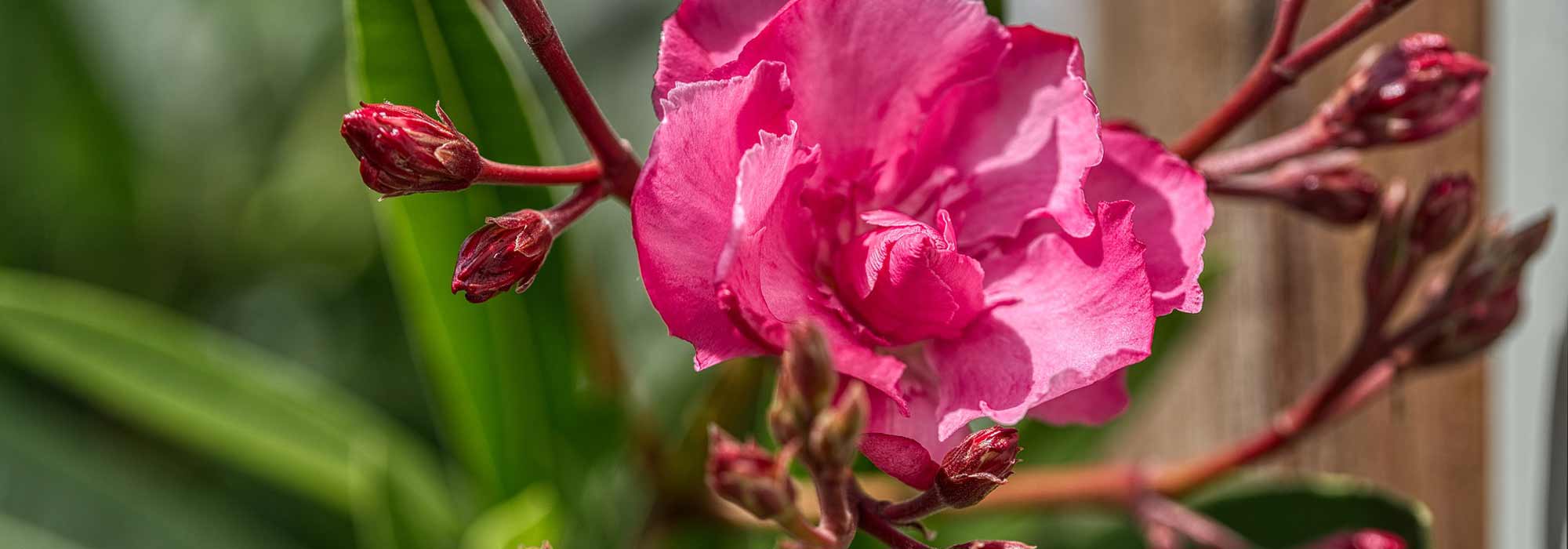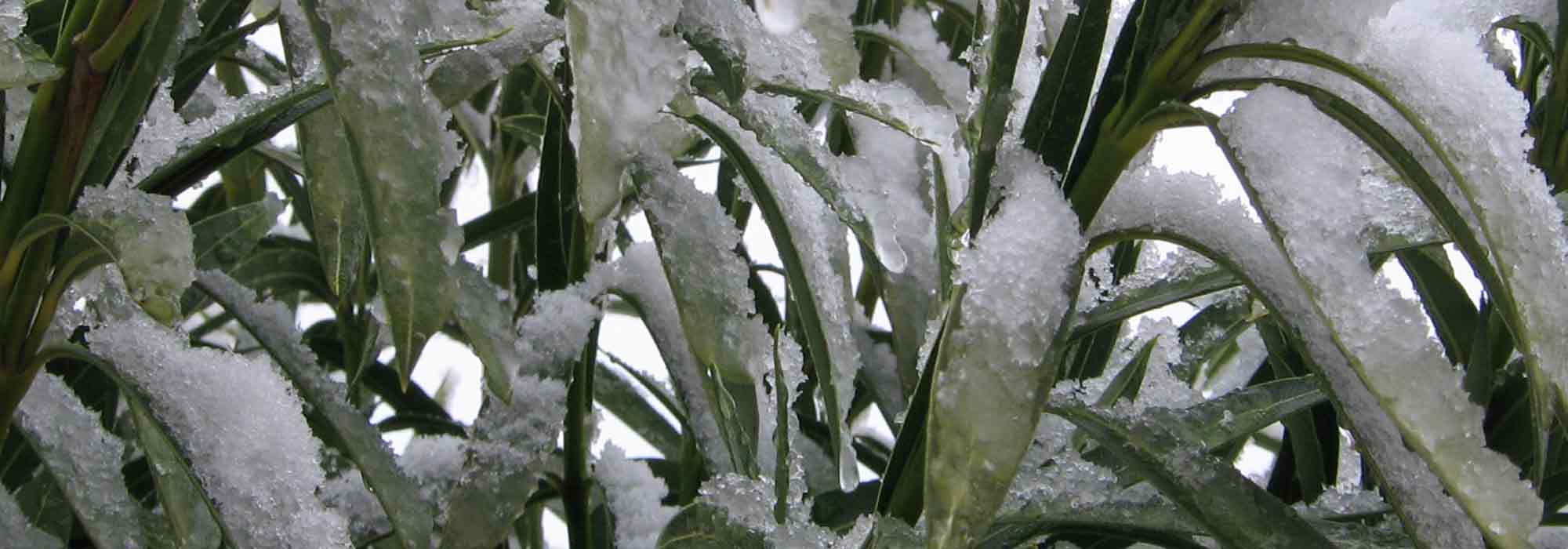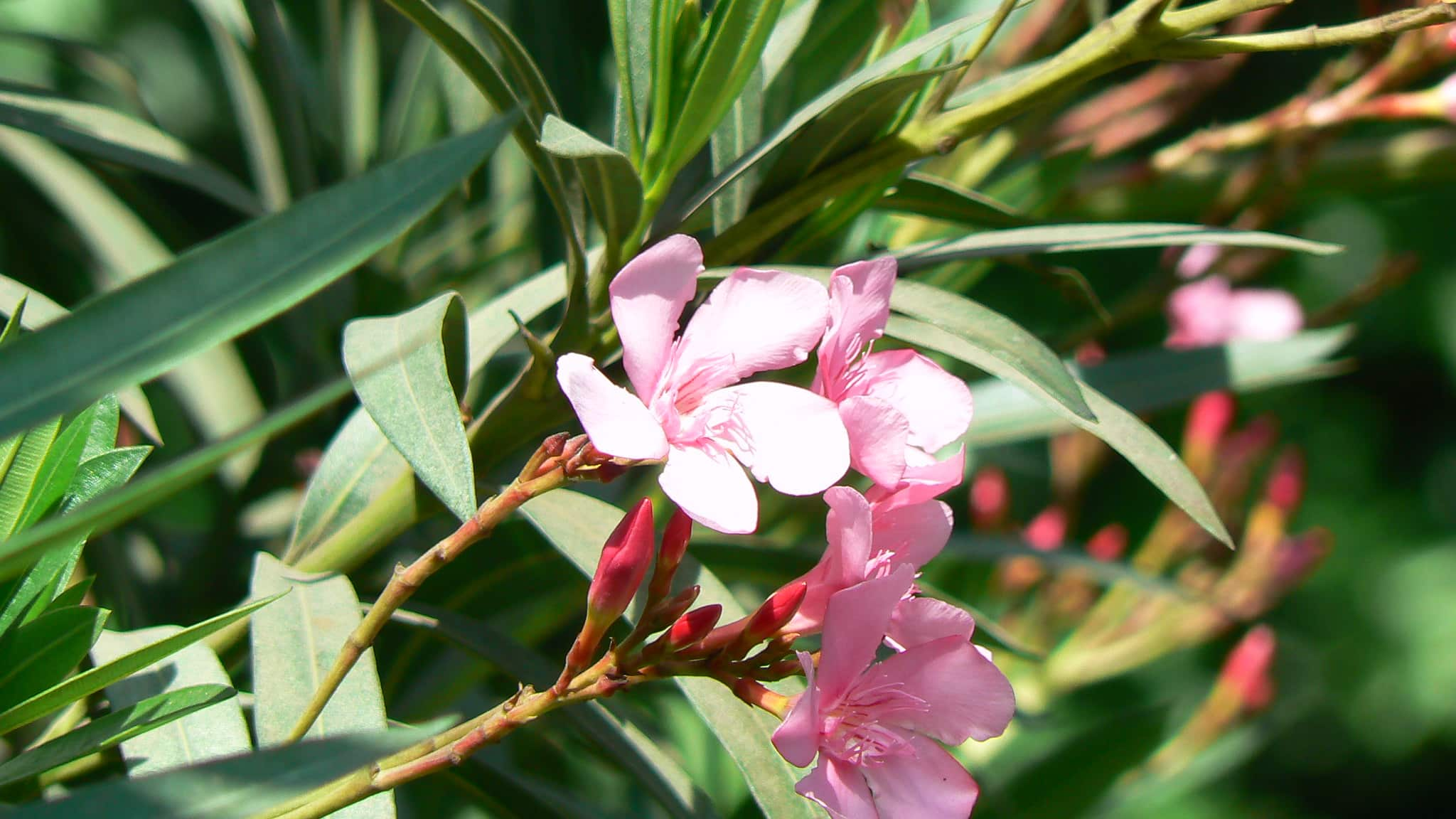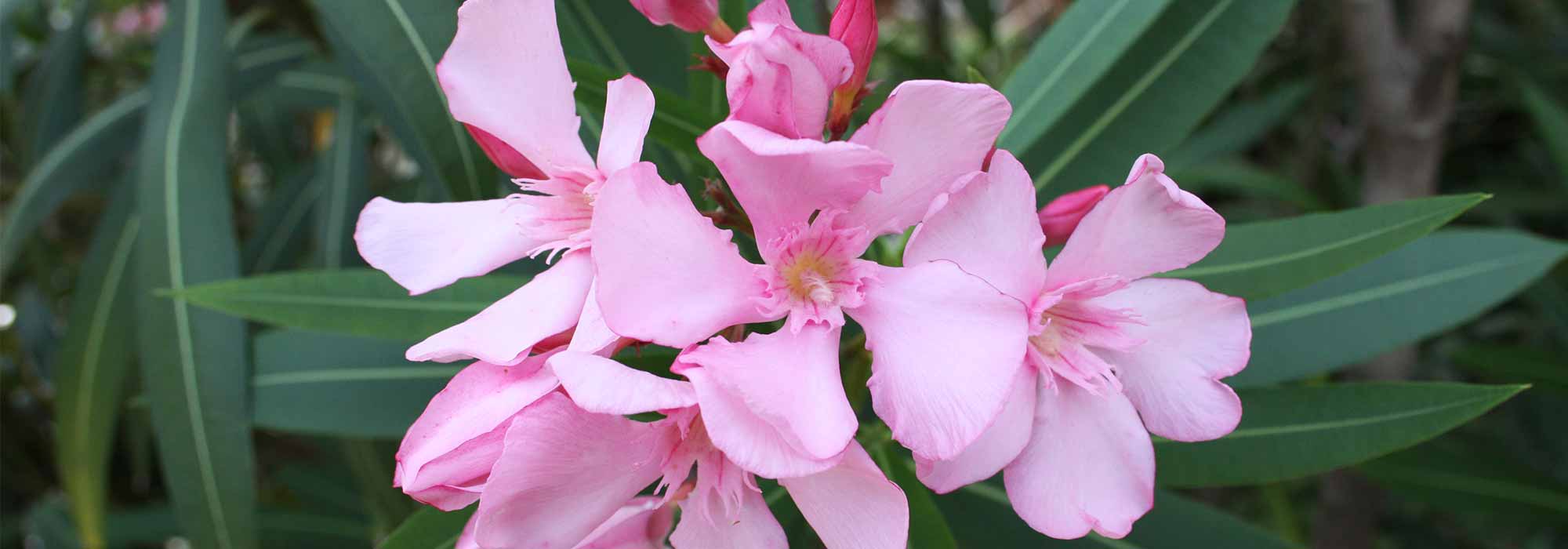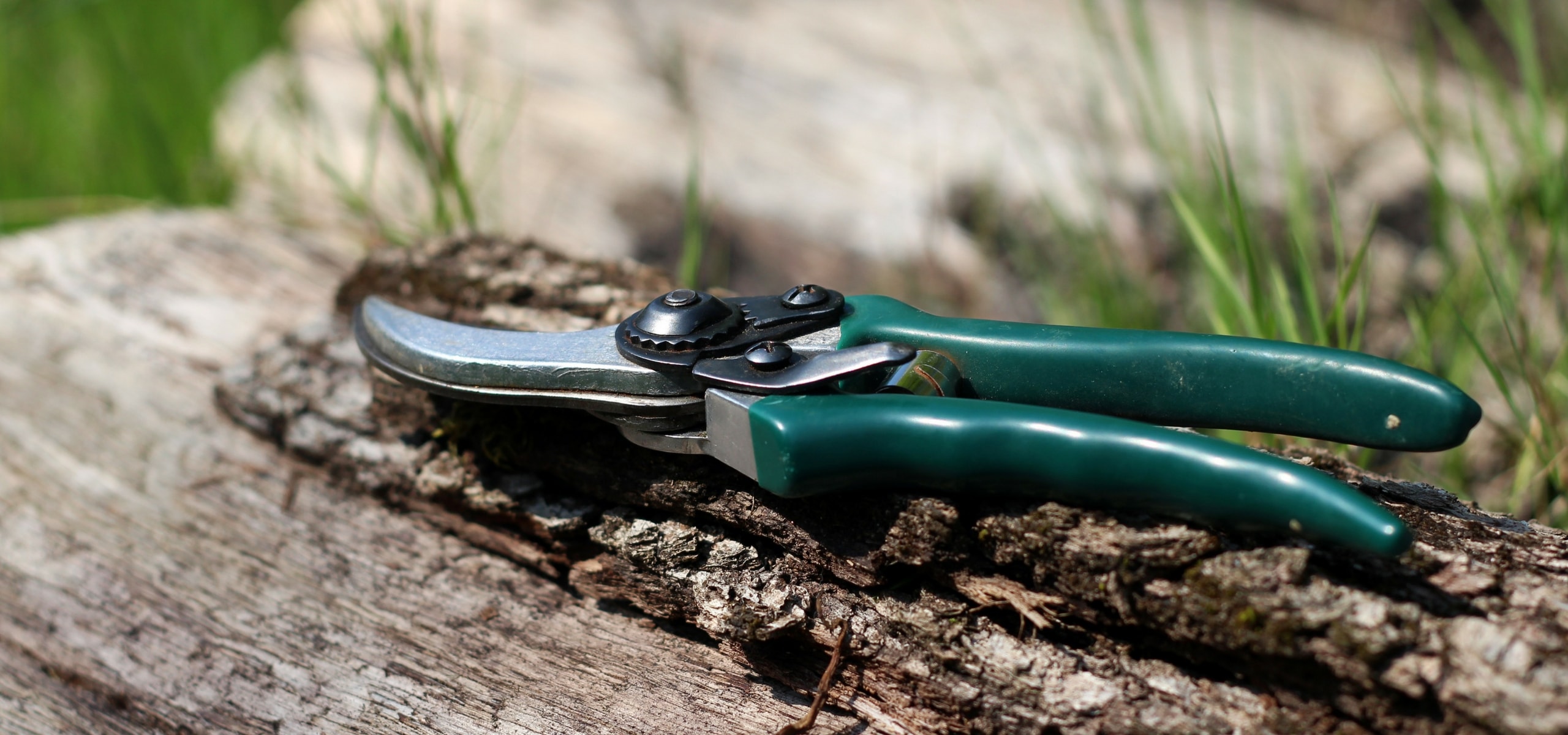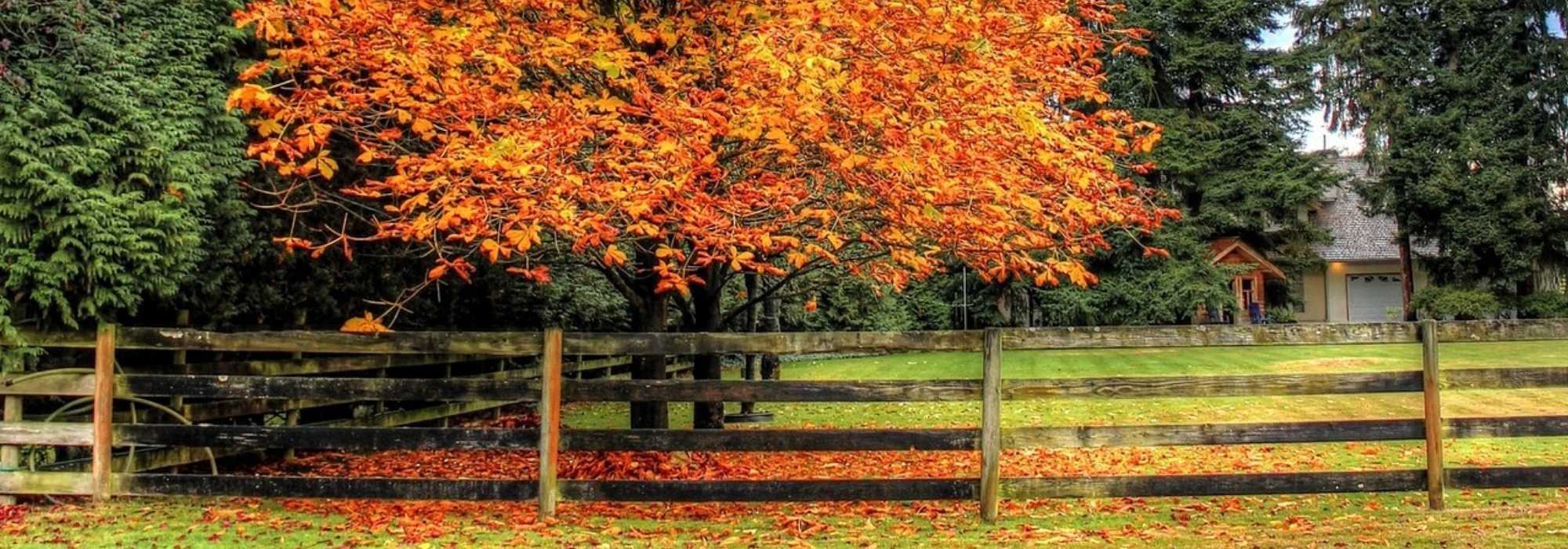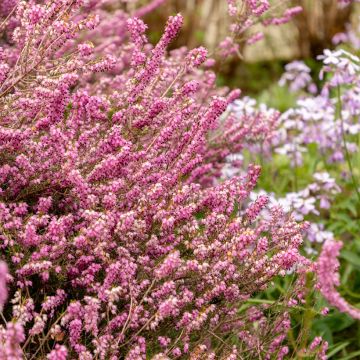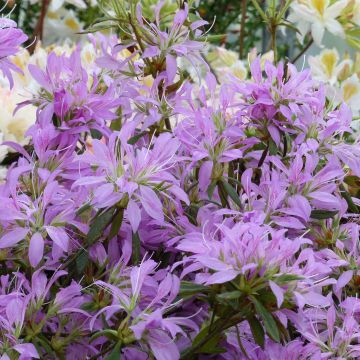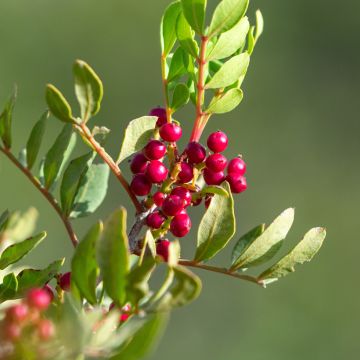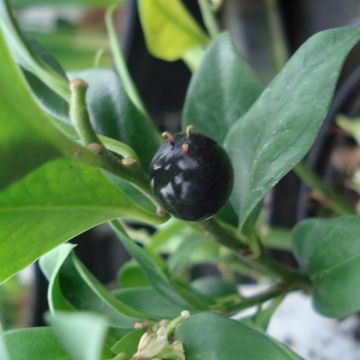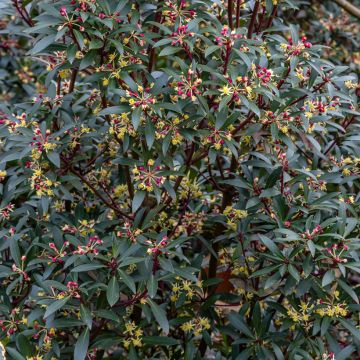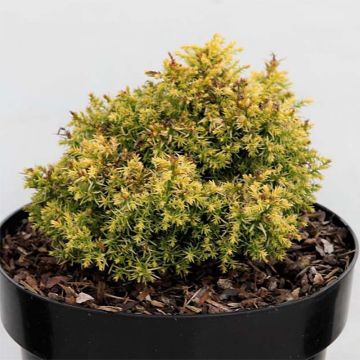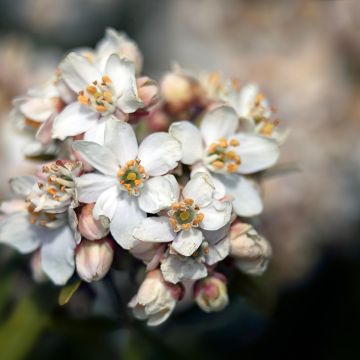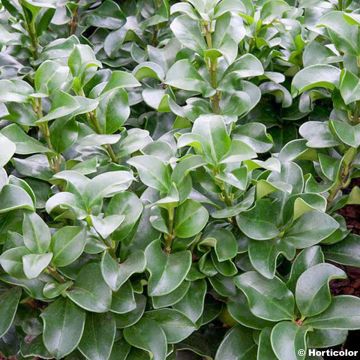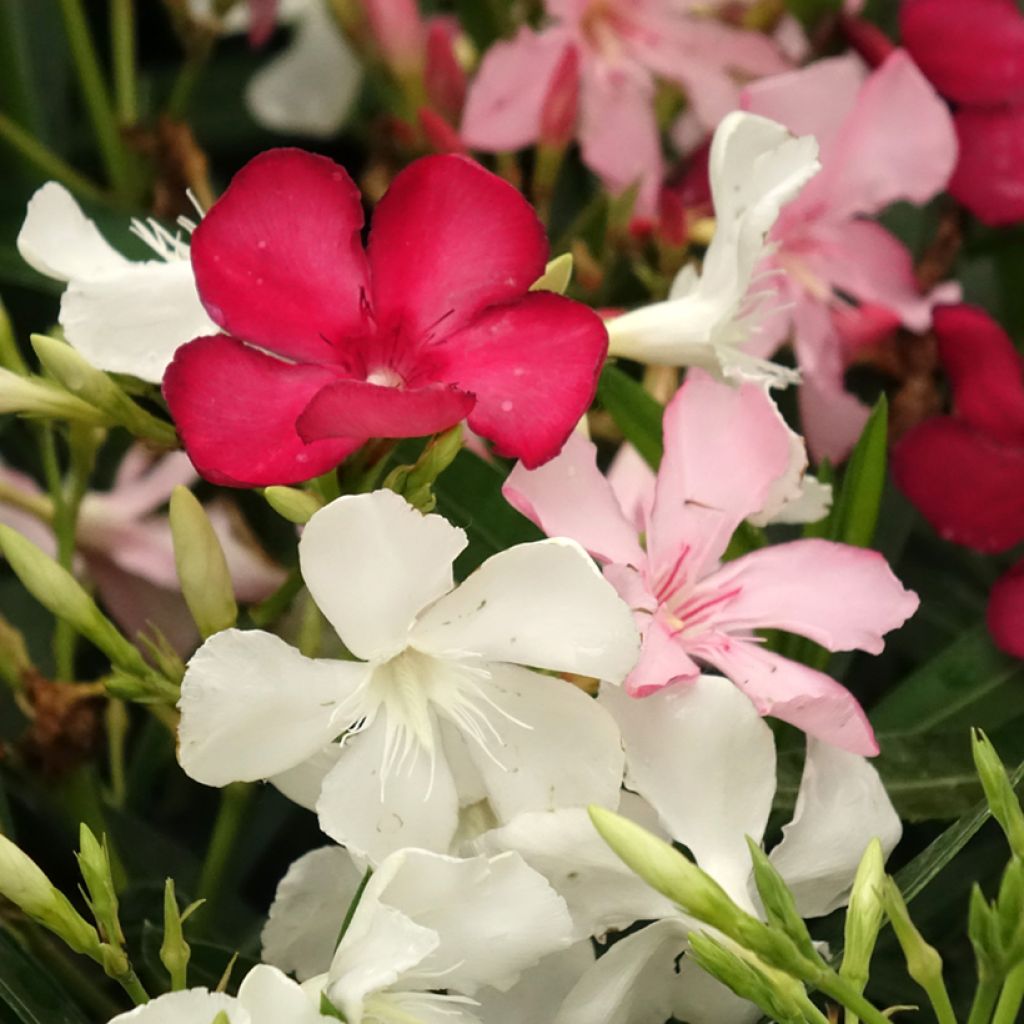

Nerium oleander tricolour pot - Laurier-rose
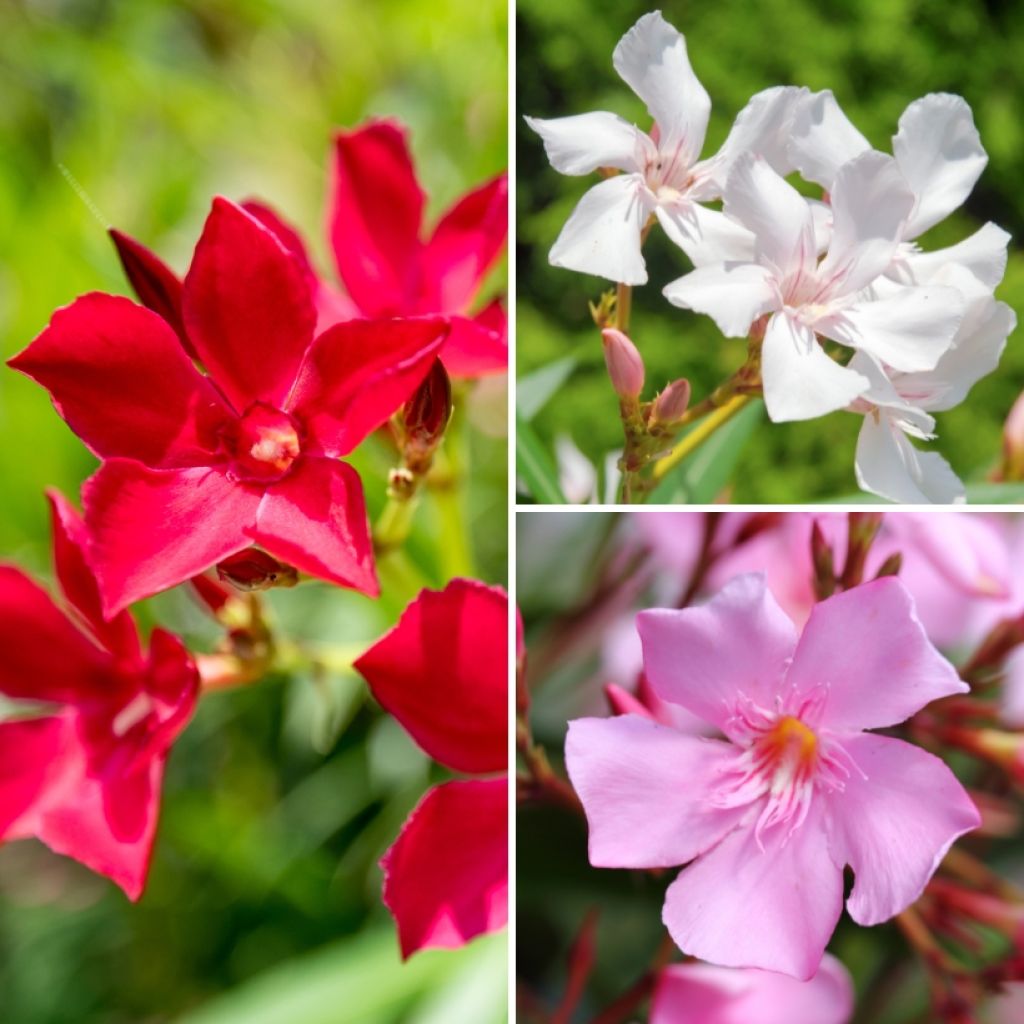

Nerium oleander tricolour pot - Laurier-rose
Nerium oleander three-colour pot
Nerium oleander
Oleander, Rose Bay
Special offer!
Receive a €20 voucher for any order over €90 (excluding delivery costs, credit notes, and plastic-free options)!
1- Add your favorite plants to your cart.
2- Once you have reached €90, confirm your order (you can even choose the delivery date!).
3- As soon as your order is shipped, you will receive an email containing your voucher code, valid for 3 months (90 days).
Your voucher is unique and can only be used once, for any order with a minimum value of €20, excluding delivery costs.
Can be combined with other current offers, non-divisible and non-refundable.
Why not try an alternative variety in stock?
View all →This plant carries a 24 months recovery warranty
More information
We guarantee the quality of our plants for a full growing cycle, and will replace at our expense any plant that fails to recover under normal climatic and planting conditions.
Would this plant suit my garden?
Set up your Plantfit profile →
Description
Nerium oleander 'Tricolour' is a combination of three Oleander plants, united in a pot designed to adorn a terrace throughout the summer season. The varieties, all with single flowers, have been chosen to create a vibrant display of colours from June to September. The white, red, and pink flowers will renew themselves throughout the summer, in a festival of colours accompanied by a light and subtle fragrance. Easy to grow, your pot will only require regular watering, supplemented with a bit of fertiliser from time to time to encourage flowering. Place it in the sun, and it will bring a touch of the Mediterranean to your summer living space.
Oleander or Nerium oleander is a member of the Apocynaceae family. The Nerium genus includes only one species, N. oleander, native to the Mediterranean region as well as parts of Asia, in areas with a humid subtropical climate. Wild plants produce pink flowers, but there are many cultivars.
The 'Tricolour' pot consists of a thoughtful selection of three single-flowered cultivars. One is pure white, the second is red, and the third is pink. Oleanders naturally adopt a bushy habit, branching from the base into multiple erect stems. They are flexible and green and harden at the base over time, turning brown. The tough, evergreen leaves are lanceolate, almost sessile (attached directly to the stem, almost without a petiole). Narrow and pointed at the tip, they measure 10 to 15 cm long and 2 to 3 cm wide and are opposite on the shoots or grouped in whorls of three. Their dark green colour provides a beautiful backdrop for the vibrant flowers. The flowers have a corolla with 5 petals, 4 to 5 cm in diameter, and are grouped in compound cymes at the ends of the shoots. They appear in June or July in cooler climates and renew themselves until September, sometimes even October. Slightly fragrant, they emit a subtle scent, especially on warm summer evenings. The combination of the three colours is particularly successful and brings joy to the summer season. This nectar-rich flowering is followed by the formation of long reddish pods that burst when ripe, releasing a multitude of small seeds equipped with a tuft of white bristles, dispersed by the wind. As the pods have no ornamental value, it is preferable to remove the faded flowers, which will encourage the formation of new inflorescences.
The 'Tricolour' Oleander composition will enchant your balcony or terrace during the summer season, generously offering you an abundance of flowers. Very tolerant of pruning, you can easily maintain it in proportions suitable for overwintering in a conservatory or orangery. To complete the Mediterranean ambience, pair it with other flowering pots created by potting perennial plants such as Euryops chrysanthemoides, which will quickly form a ball of bright green covered with vivid yellow flowers from spring to summer. A compact citrus tree, such as Calamondin, with its fragrant white flowers that turn into small orange fruits usable in cooking and yielding delicious juices, will also be a good companion.
The genus name, Nerium, is thought to derive from its ancient Greek name, Nerion, derived from Nereus, a sea god in Greek mythology. Another interpretation links Nerium to neros, meaning wet in Greek. The underlying element of water in these two interpretations is likely due to the fact that wild oleanders never grow far from water. Their long roots anchor deeply into the soil to draw moisture, even on the sides of gorges or in the beds of dried-up rivers. A testament to their incredible drought resistance, in arid regions like the Negev in Israel or the southern Anti-Atlas in Morocco, Nerium oleander is one of the few bushes, along with Acacia and Retama (a type of broom), capable of withstanding the desert, anchored in the walls of ravines.
Nerium oleander three-colour pot in pictures
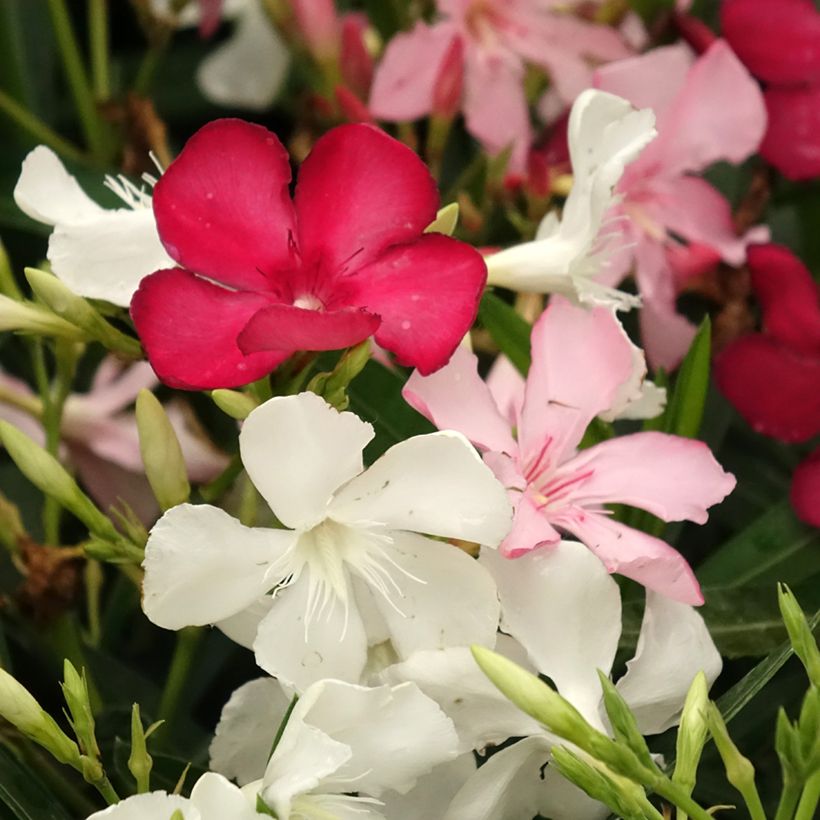

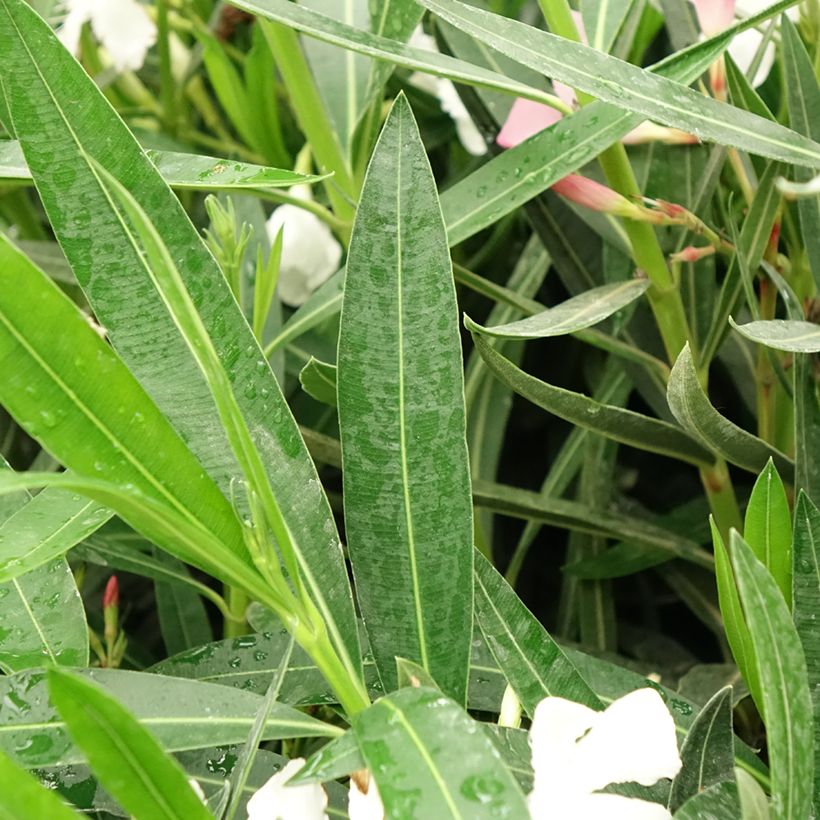

Plant habit
Flowering
Foliage
Safety measures
Botanical data
Nerium
oleander
Apocynaceae
Oleander, Rose Bay
Nerium odorum, Nerium indicum
Cultivar or hybrid
ingestion
Cette plante est toxique si elle est ingérée volontairement ou involontairement.
Ne la plantez pas là où de jeunes enfants peuvent évoluer, et lavez-vous les mains après l'avoir manipulée.
Pensez à conserver l'étiquette de la plante, à la photographier ou à noter son nom, afin de faciliter le travail des professionnels de santé.
Davantage d'informations sur https://plantes-risque.info
Other Nerium - Oleander
View all →Planting and care
The Nerium oleander 'Tricolor' composition is designed to be placed on a terrace or balcony to enjoy a long summer flowering. In regions where frost is frequent, intense, or prolonged, it should be brought indoors to a cool, frost-free, and sufficiently bright area, such as a conservatory or a garage with a window. Outdoors, ensure you water your pot regularly. Reduce watering in winter. If your region experiences regular frosts below -4°C or -5°C, you will need to overwinter your composition in a sheltered location.
In warm regions or along the coast, you can plant it in the ground in spring, when frost is no longer a concern, but preferably in early autumn, in a warm and dry climate. Place it in a very sunny and sheltered position, in deep, well-drained soil, even chalky or subject to brackish water. Although it can grow in the shade, it will be much less floriferous, and its habit will become more leggy and less bushy. While it is very drought-resistant, it will only flower abundantly in soil that remains sufficiently moist at depth. It is highly resistant to salt spray. Monitor watering during the first two summers. It will appreciate a compost feed and a thick layer of dead leaves, especially during the first two winters in regions with marginal hardiness. Water at the base of the plant, never on the foliage, as this could lead to bacterial attacks.
Pruning oleander requires some care as the bush only flowers on young shoots that have reached a certain length (usually stems less than a year old, not too short), so it is essential not to cut back all the branches in the same year, as this would result in no flowers for the entire season. When necessary, pruning should be done in early spring. However, in warmer regions, it is possible to prune in September, as the oleander will then have enough time to regrow before winter.
Nerium is often prey to scale insects, leading to sooty mould on the foliage. Thin out and aerate the branches. Treat with copper (Bordeaux mixture) in spring if necessary. If the scale infestation is severe, cut your oleander back to 10-20 cm above the ground: its ability to regenerate from the stump is significant, and the bush will regain its beautiful appearance in no time. Aphids may also settle on the flower buds: treat in the evening with diluted black soap in water.
Oleander is also famous for the toxicity of its sap; it is worth noting that the sap has an intensely bitter and acrid taste, so that few unfortunate tasters could ingest enough to make it lethal, especially as they would feel an overwhelming urge to rinse their mouths immediately! Most accidents occur due to confusion between oleander and bay laurel in cooking (the aroma of bay laurel is unmistakable), or from using the stems as skewers...
Planting period
Intended location
Care
Planting & care advice
This item has not been reviewed yet - be the first to leave a review about it.
Similar products
Haven't found what you were looking for?
Hardiness is the lowest winter temperature a plant can endure without suffering serious damage or even dying. However, hardiness is affected by location (a sheltered area, such as a patio), protection (winter cover) and soil type (hardiness is improved by well-drained soil).

Photo Sharing Terms & Conditions
In order to encourage gardeners to interact and share their experiences, Promesse de fleurs offers various media enabling content to be uploaded onto its Site - in particular via the ‘Photo sharing’ module.
The User agrees to refrain from:
- Posting any content that is illegal, prejudicial, insulting, racist, inciteful to hatred, revisionist, contrary to public decency, that infringes on privacy or on the privacy rights of third parties, in particular the publicity rights of persons and goods, intellectual property rights, or the right to privacy.
- Submitting content on behalf of a third party;
- Impersonate the identity of a third party and/or publish any personal information about a third party;
In general, the User undertakes to refrain from any unethical behaviour.
All Content (in particular text, comments, files, images, photos, videos, creative works, etc.), which may be subject to property or intellectual property rights, image or other private rights, shall remain the property of the User, subject to the limited rights granted by the terms of the licence granted by Promesse de fleurs as stated below. Users are at liberty to publish or not to publish such Content on the Site, notably via the ‘Photo Sharing’ facility, and accept that this Content shall be made public and freely accessible, notably on the Internet.
Users further acknowledge, undertake to have ,and guarantee that they hold all necessary rights and permissions to publish such material on the Site, in particular with regard to the legislation in force pertaining to any privacy, property, intellectual property, image, or contractual rights, or rights of any other nature. By publishing such Content on the Site, Users acknowledge accepting full liability as publishers of the Content within the meaning of the law, and grant Promesse de fleurs, free of charge, an inclusive, worldwide licence for the said Content for the entire duration of its publication, including all reproduction, representation, up/downloading, displaying, performing, transmission, and storage rights.
Users also grant permission for their name to be linked to the Content and accept that this link may not always be made available.
By engaging in posting material, Users consent to their Content becoming automatically accessible on the Internet, in particular on other sites and/or blogs and/or web pages of the Promesse de fleurs site, including in particular social pages and the Promesse de fleurs catalogue.
Users may secure the removal of entrusted content free of charge by issuing a simple request via our contact form.
The flowering period indicated on our website applies to countries and regions located in USDA zone 8 (France, the United Kingdom, Ireland, the Netherlands, etc.)
It will vary according to where you live:
- In zones 9 to 10 (Italy, Spain, Greece, etc.), flowering will occur about 2 to 4 weeks earlier.
- In zones 6 to 7 (Germany, Poland, Slovenia, and lower mountainous regions), flowering will be delayed by 2 to 3 weeks.
- In zone 5 (Central Europe, Scandinavia), blooming will be delayed by 3 to 5 weeks.
In temperate climates, pruning of spring-flowering shrubs (forsythia, spireas, etc.) should be done just after flowering.
Pruning of summer-flowering shrubs (Indian Lilac, Perovskia, etc.) can be done in winter or spring.
In cold regions as well as with frost-sensitive plants, avoid pruning too early when severe frosts may still occur.
The planting period indicated on our website applies to countries and regions located in USDA zone 8 (France, United Kingdom, Ireland, Netherlands).
It will vary according to where you live:
- In Mediterranean zones (Marseille, Madrid, Milan, etc.), autumn and winter are the best planting periods.
- In continental zones (Strasbourg, Munich, Vienna, etc.), delay planting by 2 to 3 weeks in spring and bring it forward by 2 to 4 weeks in autumn.
- In mountainous regions (the Alps, Pyrenees, Carpathians, etc.), it is best to plant in late spring (May-June) or late summer (August-September).
The harvesting period indicated on our website applies to countries and regions in USDA zone 8 (France, England, Ireland, the Netherlands).
In colder areas (Scandinavia, Poland, Austria...) fruit and vegetable harvests are likely to be delayed by 3-4 weeks.
In warmer areas (Italy, Spain, Greece, etc.), harvesting will probably take place earlier, depending on weather conditions.
The sowing periods indicated on our website apply to countries and regions within USDA Zone 8 (France, UK, Ireland, Netherlands).
In colder areas (Scandinavia, Poland, Austria...), delay any outdoor sowing by 3-4 weeks, or sow under glass.
In warmer climes (Italy, Spain, Greece, etc.), bring outdoor sowing forward by a few weeks.


































